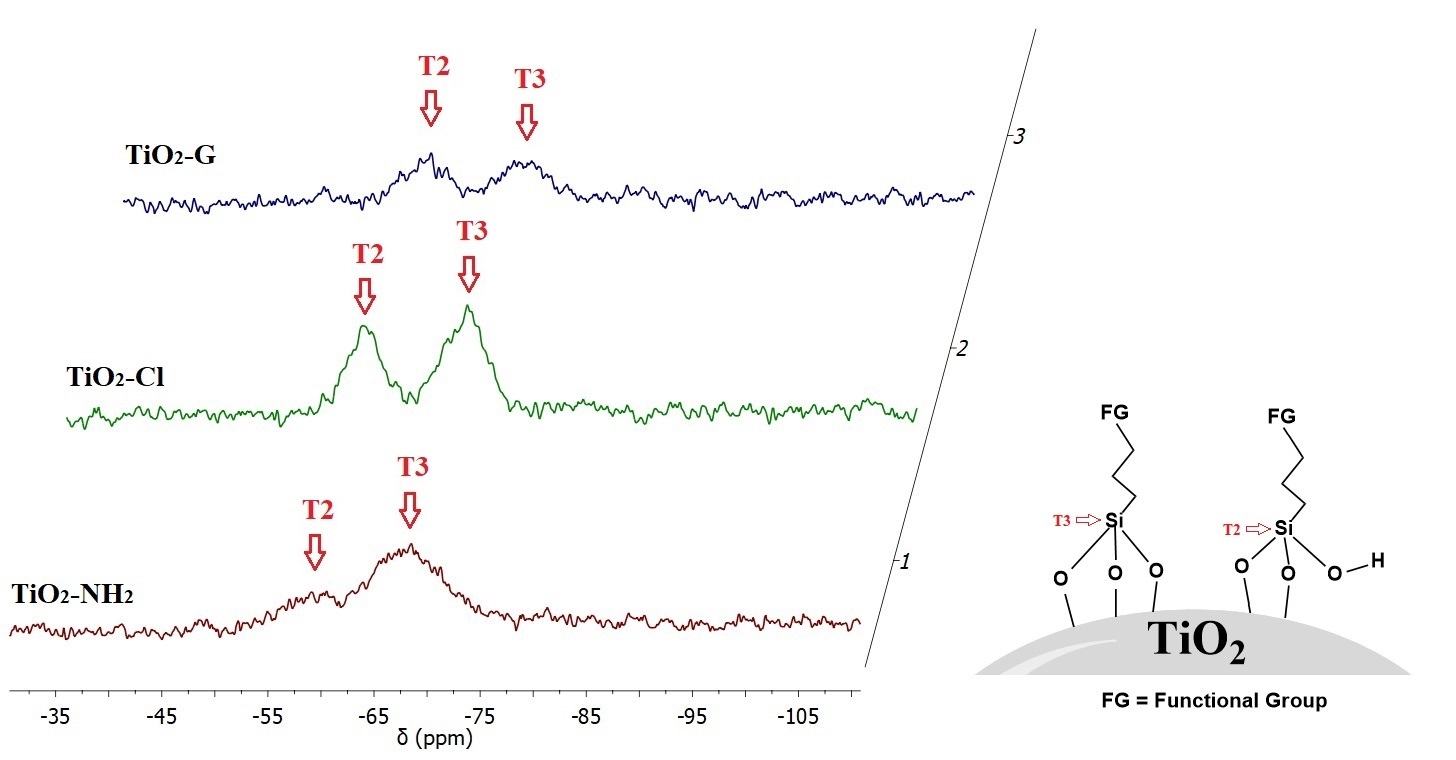 |
|
Functionalization of fillers provides advantages in non-isothermal crystallization of isotactic polypropylene (iPP); therefore, kinetic properties iPP composites filled with alkoxysilane-functionalized titanium dioxide (TiO2) were investigated to understand the role of functional groups. The surface modification of TiO2 nanoparticle was carried out with three different alkoxysilanes: 3-aminopropyltrimethoxysilane (APTMS), 3-chloropropyltrimethoxysilane (CPTMS) and 3-glycidoxypropyltrimethoxysilane (GPTMS); after, composites were prepared 0.5% by weight in iPP. The results of the X-Ray Diffraction and Nuclear magnetic resonance analyses showed the characteristic signals of each chemical species that confirm the success of surface modification of the oxide with alkoxysilanes. The study by Differential scanning calorimetry at different cooling rates allowed to observe that the non-isothermal crystallization of iPP composites is described by Jeziorny’s and Mo’s equations; and that the addition of fillers of TiO2 modified with the alkoxysilanes changed the crystallization process thanks to the functional groups and their interface interactions with the polymer matrix; for example, the presence of CPTMS and GPTMS caused recrystallization of iPP and therefore, increased the crystallization process rate. Finally, the activation energy of the composites varied depending on the alkoxysilane used, since less energy was needed for some cases; derived from better dispersion and that the particles acted as nucleation centers.
Keywords: isotactic polypropylene, alkoxysilanes, non-isothermal crystallization, fillers, titanium dioxide.
|
|
 |

